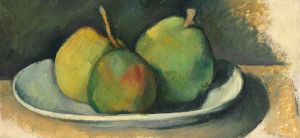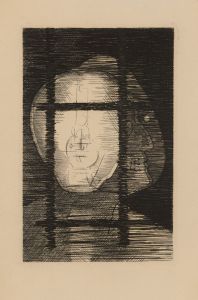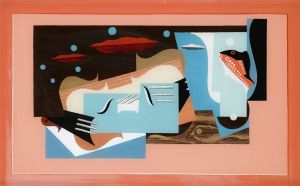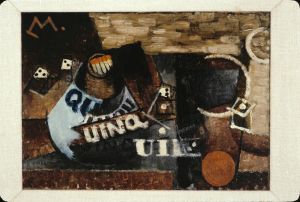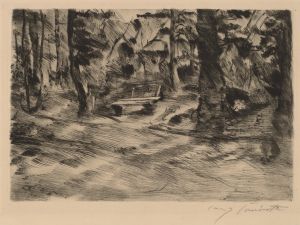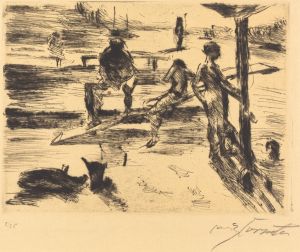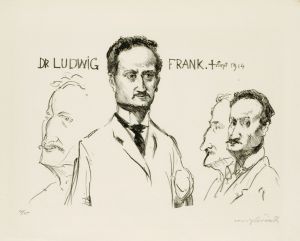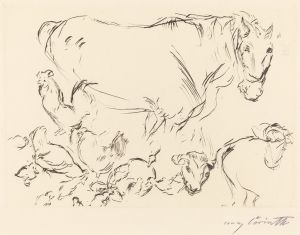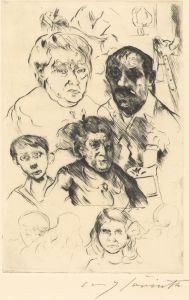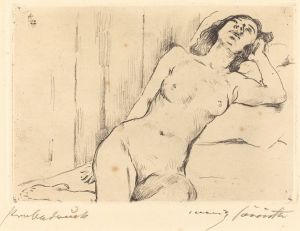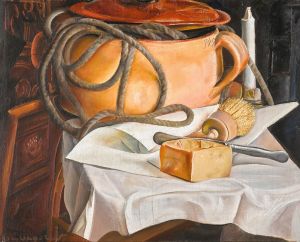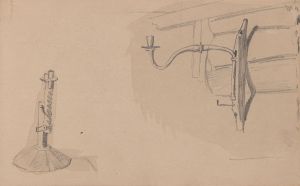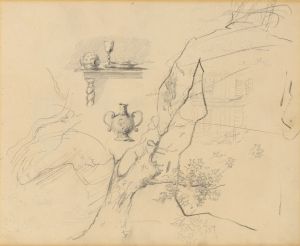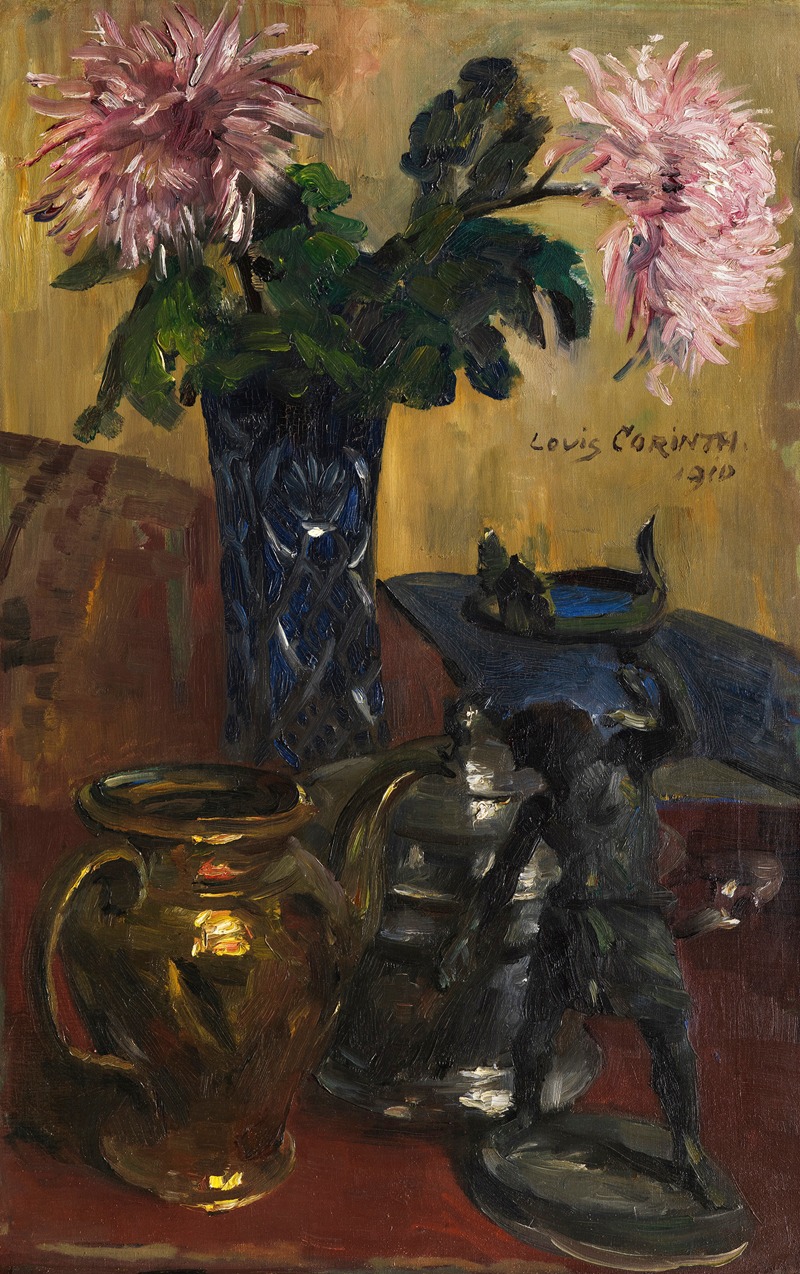
Stillleben Metall
A hand-painted replica of Lovis Corinth’s masterpiece Stillleben Metall, meticulously crafted by professional artists to capture the true essence of the original. Each piece is created with museum-quality canvas and rare mineral pigments, carefully painted by experienced artists with delicate brushstrokes and rich, layered colors to perfectly recreate the texture of the original artwork. Unlike machine-printed reproductions, this hand-painted version brings the painting to life, infused with the artist’s emotions and skill in every stroke. Whether for personal collection or home decoration, it instantly elevates the artistic atmosphere of any space.
Lovis Corinth's Stillleben Metall (translated as Metal Still Life) is a painting created by the German artist Lovis Corinth, a prominent figure in the transition from Impressionism to Expressionism. Corinth, born in 1858 in Tapiau, East Prussia (now Gvardeysk, Russia), was known for his dynamic brushwork, vibrant use of color, and ability to capture the interplay of light and texture in his works. His oeuvre includes portraits, landscapes, and still lifes, with Stillleben Metall being an example of his exploration of the still life genre.
The painting, as its title suggests, focuses on metallic objects, a subject that allowed Corinth to demonstrate his mastery of rendering reflective surfaces and intricate textures. Still lifes were a recurring theme in Corinth's career, and he often used them as a means to experiment with composition, light, and materiality. In Stillleben Metall, Corinth likely employed his characteristic loose and expressive brushstrokes, which imbue his works with a sense of immediacy and vitality.
While specific details about the creation date or the exact objects depicted in Stillleben Metall are not widely documented, Corinth's still lifes often featured everyday items such as household utensils, vases, and other objects that reflected his interest in the material world. His approach to still life painting was influenced by both the Dutch Golden Age tradition and the modernist movements of his time, blending classical techniques with a more contemporary sensibility.
Lovis Corinth's career was marked by significant personal and artistic milestones. After studying at the Academy of Fine Arts in Munich and later in Paris, he became a member of the Berlin Secession, an influential group of artists who sought to challenge academic conventions in art. Corinth's work evolved significantly after he suffered a stroke in 1911, which affected his motor skills but also led to a more expressive and emotional style in his later paintings.
Today, Corinth's works are held in high regard and are featured in major museums and collections worldwide. His still lifes, including Stillleben Metall, are celebrated for their technical skill and the way they capture the beauty and complexity of everyday objects. However, detailed information about the provenance or current location of Stillleben Metall is not readily available in public records.
This painting exemplifies Corinth's ability to elevate ordinary objects into subjects of artistic inquiry, showcasing his talent for capturing the interplay of light, texture, and form.





